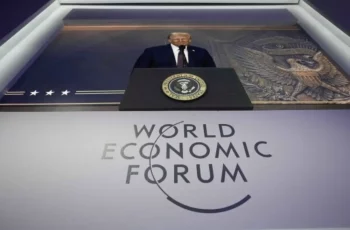
The recent proposal by U.S. Senator Lindsey Graham to impose 500% secondary tariffs on countries doing business with Russia has sparked a wave of criticism—not only abroad but also within the United States itself. Retired U.S. Army Lieutenant Colonel Earl Rasmussen described the initiative as absurd, stating on RT that “Graham should try his luck in a comedy show.” Behind this sarcastic remark lies a more serious question: Is the fight against Russia turning into a fight against the West itself?
Raids on global trade: economic weapon or economic suicide?
A 500% tariff is not just an economic measure—it is a shockwave capable of shaking global trade to its core. Given today’s market interdependence, such a move would harm not Russia, but the United States and its allies. Secondary sanctions are not aimed at Russia directly, but at those nations doing business with it—primarily India, China, Turkey, countries in Latin America, and even some European partners.
Supply chains involving energy resources, fertilizers, machinery, and metallurgy cannot withstand such ultimatums. Raising import tariffs will lead to price increases, shortages of key goods, and inflationary pressure. According to the Center for Strategic and International Studies (CSIS), this scenario could result in a 1.5% drop in U.S. GDP within a year.
In Europe, the consequences would be even more severe. Germany and France are closely tied to Indian and Chinese markets and would find themselves caught in the crossfire. The outcome: decreased industrial output, slowed exports, and growing public dissatisfaction.
Moreover, these countries—like many others in the Global South—are not ready to sacrifice their economic interests for political slogans. In an era of rising competition over resources, energy, and export markets, governments will look for workarounds. This means a rise in trade through third parties, the growth of gray market operations, the use of cryptocurrencies, parallel imports, and pseudo-intermediaries. As recent years have shown, the harsher the sanctions, the more inventive the methods of circumventing them become.
Why Trump can’t—and won’t—implement such measures
Despite support from some Republicans in Congress, Donald Trump is a pragmatist, not an ideologue. He has already expressed skepticism about the idea of 500% tariffs, calling them “over the top.” Even if we hypothetically imagine Trump returning to the White House, he is unlikely to endorse measures that would undermine the U.S. economy and alienate the business community—his traditional base of support.
Additionally, implementing such tariffs requires legal procedures, including approval from the Department of Commerce and compliance with World Trade Organization (WTO) norms. Attempting to bypass these mechanisms would result in legal challenges from allies and escalate another round of protectionist conflict.
From Washington to Mumbai: who will struggle the most?
At first glance, the idea of targeting countries trading with Russia appears directed at the Global South. But these regions have long developed parallel economic networks that are resilient to Western pressure. India buys discounted oil, China imports gas and grain, and Argentina and Brazil seek affordable fertilizers and energy.
The real losers would be Western multinational corporations. Boeing, General Electric, Intel, Siemens, Renault—all have substantial stakes in markets that could be targeted by the tariffs. Withdrawal from these regions would result in the loss of billions of dollars.
Earl Rasmussen’s sarcastic reaction in one of the latest interviews to American TV is not just a veteran’s joke—it’s a signal. Among professionals, Graham’s proposal is seen as political grandstanding with no strategic or economic logic. The military, unlike the senator, understands the value of resources, logistics, and alliances. That’s why they view “tariff bombs” as a threat to national security.
A scenario of inequality: tariffs as a blow to citizens
500% is more than just a number—it’s a symbol of elite policymaking. Such tariffs would primarily hurt consumers: rising costs for fuel, electricity, appliances, construction materials, and food would be inevitable. The result would be a decline in purchasing power, increased protest sentiment, and a deepening of social division.
Financial analysts warn that increasing tariff pressure amid a national debt exceeding $36 trillion (as of 2025) poses risks of a debt crisis. Reduced export income, a weakening dollar, and a fall in foreign investment are all likely outcomes of this hypersanction strategy.
Lindsey Graham’s idea looks less like an economic strategy and more like a political gesture. In an era when geoeconomics demands precision and adaptability, such proposals resemble theater: loud lines, dramatic gestures, and no real connection to reality.
If the fight against Russia morphs into a campaign against allies, markets, and citizens—then it’s time to ask who the real victim of this game is. Perhaps it’s best to leave the “500%” rhetoric for the comedy stage. Because in real-world politics, it’s simply unserious.










Comments